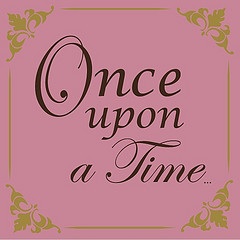“Once upon a time…” Need I go further? You know you’ve entered a story. Perhaps you prefer something a little more straightforward: “Call me Ishmael,” “I am an invisible man” or “Mother died today.” The simple act of telling a story demands attention whether it starts with the fantastical or the concrete. It’s the difference between academic and business-speak and barroom banter.Communicating by way of proven fiction storytelling techniques can be a more compelling and effective route to your business objectives. This is part 1 of 3 of a guest post by Jason Hensel
“Once upon a time…” Need I go further? You know you’ve entered a story. Perhaps you prefer something a little more straightforward: “Call me Ishmael,” “I am an invisible man” or “Mother died today.” The simple act of telling a story demands attention whether it starts with the fantastical or the concrete. It’s the difference between academic and business-speak and barroom banter.
Proving the value of meetings and events to business stakeholders is one of your objectives as a meeting professional. But all too often, we rely on metrics in the boardroom, populating the air and handouts with numbers and graphs—anything that’s so abstract it kills a presentation’s soul. You’re not getting through to your bosses—and they rely on you for insomnia relief.
There is another way: tell a story.
Let’s not confuse storytelling with branding. We’re not talking about how a company or person sells itself or herself. Storytelling is the time-honored practice of using fictional techniques to engage. You do it naturally already. Think of Mondays, for example, when you’re telling co-workers about your weekend or meeting with them on a Friday afternoon at a local pub to talk about the previous week. That’s no different than an ancient Sumerian telling his clan how the gods gave him a divine drink made from fermented bread.
“The need for story runs in our blood. In fact, scholars postulate that storytelling has been with us for half a million years,” said Nancy Lamb, writer and author of The Art and Craft of Storytelling. “Whether you’re talking about how you repelled an attack from a cave bear or how the goals of your mission will improve your life and/or the life of the group, storytelling is paramount to your presentation.”
Stories also help us make sense of the world.
“There’s a fair amount of science supporting the theory that the human mind from an early age is wired for stories,” said Lou Hoffman, president and CEO of The Hoffman Agency, a PR firm. “It’s a more interesting and compelling way of communicating, which in turn increases the listening quotient of the audience and ultimately makes what you say more memorable. Somewhere along the line, people got the idea that business communications needed to be different—vanilla, stiff, jargon filled, etc.—than [communications] in personal life. As a result, the vast majority of business communications is deadly dull. If a person simply uses a conversational style, often that alone can cause the communications to stand out.”
Finding ways to craft a conversational narrative is easy—focus your story on such basic elements as conflict, character and plot, and you’ll inevitably engage your listeners and readers in an attempt to meet your business objectives.
“From the most plot-driven spy novel to the most introspective, meditative piece of literature, a story is necessarily about something—even a person sitting alone in a room quietly is doing something. I think ‘conflict’ is less essential than some kind of ‘lack’ is—stories are very often about want, desire or some kind of quest for acquisition, even if all that is being quested after is an understanding of oneself,” said Justin Taylor, an author and Rutgers University writing instructor. “Very often, lack manifests as conflict, because if I want something, and seek it, I have to get it from somewhere, and that will probably mean getting it from somebody or something else. I have to get them to give it to me—would-be lover must convince the subject of his love that he is worthy of her; hero performs a little broadsword-surgery on a dragon; car company tries to convince consumer that what consumer really needs is a car, and this car rather than any other.”
Stay tuned for part 2…
JASON HENSEL is associate editor of One+
photo by Katrina Snaps

Pingback: Using fictional storytelling techniques in business, part 2 | Fast Track Tools by Ken Revenaugh